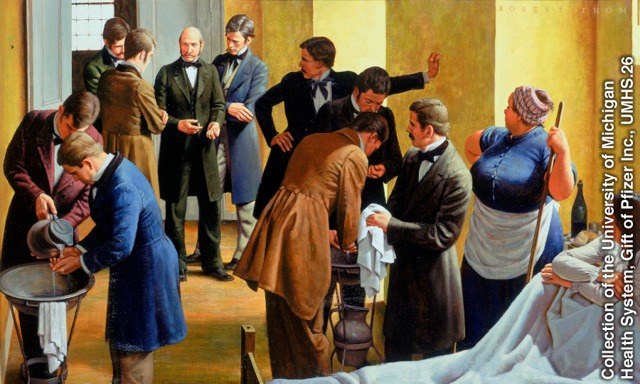
IGNAZ SEMMELWEIS may not be a household name, yet his
work has benefited most modern families. Born in Buda (now Budapest), Hungary,
he received his medical degree at the University of Vienna in 1844. On taking
up his post as assistant to a professor at the First Maternity Clinic of Vienna’s
General Hospital in 1846, Semmelweis faced an appalling reality—more than 13 percent of the
women giving birth there died from a disease called childbed fever.
Various theories as to the cause of this
disease had been proposed, yet no one had solved the mystery. All attempts to
reduce the mortality rate proved futile. Troubled by the spectacle of numerous
mothers suffering a slow, agonizing death, Semmelweis determined to find the
cause of the disease and prevent it.
The hospital in which Semmelweis worked
had two separate maternity clinics, and curiously, the maternal death rate was
much higher in the first clinic than it was in the second. The only difference
between the two clinics was that medical students were taught in the first and
midwives in the second. Why, then, such a difference in death rates? Probing
that question, Semmelweis systematically eliminated possible causes of the
disease, but the culprit remained elusive.
In early 1847,
Semmelweis was presented with a crucial clue. His colleague and friend Jakob
Kolletschka had died from blood poisoning after sustaining a wound while
performing a postmortem examination. As he read the report of the autopsy
performed on Kolletschka, Semmelweis realized that in some aspects, the
findings were identical to those of the victims of childbed fever. Hence,
Semmelweis thought that perhaps what he termed “poisons” from
cadavers were infecting pregnant patients, thus causing childbed fever. Doctors
and medical students, who frequently did autopsies before going to the
maternity ward, had unwittingly been transmitting the disease to expectant
mothers during obstetric examinations or childbirth! Mortality in the second
ward was lower because students of midwifery did not perform autopsies.
Semmelweis immediately introduced a
strict policy of handwashing, which included sterilizing the hands in a
solution of chlorinated lime before initiating examinations of pregnant women.
The results were dramatic: mortality rates plummeted from 18.27 percent in
April to 0.19 percent by the end of the year.
“My doctrines
exist to rid maternity hospitals of their horror, to preserve the wife for her
husband and the mother for her child.”—Ignaz Semmelweis
Not all welcomed Semmelweis’ success.
The results he obtained challenged the theories concerning childbed fever held
by his superior, who also found Semmelweis’ insistent manner irritating.
Semmelweis eventually lost his post in Vienna and returned to Hungary. There he
took charge of the obstetrics department at the St. Rochus Hospital in
Pest, where his methods brought down the mortality rate for childbed fever to
under 1 percent.
In 1861,
Semmelweis published his life’s work, The Cause, Concept, and Prophylaxis of Childbed Fever. Unfortunately,
the importance of his findings was not recognized until some years later. In
the meantime, countless lives that could have been saved were tragically lost.

·
In
19th-century Europe, many women died of childbed fever, a scourge with
mortality rates of up to 30 percent.
·
Microbes
had been observed under a microscope as early as 1674, but their dangers had
not been fully understood. It was common practice for doctors to deliver babies
right after performing autopsies, without first sterilizing their hands.
·
Semmelweis
introduced handwashing into medical practice, thus saving countless lives.